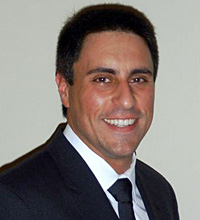Four Myths & Realities in the Constellation of Issues that Family Businesses Face
Too often, consultants to family enterprise take the same approach used when serving the C-suite of a Fortune 500 firm. This ends up being a huge mistake as it overlooks the family’s unique history and dynamics that tend to serve as major sources of influence. Conversely, the pendulum can swing too far in the opposite direction. In an effort to be sensitive to the “human elements” at play, consultants will sidestep the economic realities of the firm and its competitive operating environment, doing everyone in the process a huge disservice. Below are the four most common myths that consultants often work under when serving family enterprises.
Myth 1: You can understand the family enterprise by reviewing its historical financials
While understanding a typical business’s present situation involves reviewing one, three or five years’ worth of financials, the historical context needed to understand a family business is likely to be measured in decades, if not centuries. To properly serve these types of businesses, one has to go back to the very beginning, even if the “founding fathers” are no longer living. While traditional consulting takes an understanding of the present and helps to chart out a company’s future from there, family business consultants take their understanding of the past, and, with it, help the family prepare for the future by shaping its present.
Given the familial connection, significant weight will be placed on the origins of the business and its original mission. This was evident with an Ohio-based manufacturing client of ours whose grandfather had started the company during World War II, with the U.S. Army as his sole client. The firm became one of the largest employers in the town where it operated and had a strong commitment to its employees. As the decades went by and outsourcing overseas became prevalent, this commitment became harder to uphold. Because the employee focus was ingrained into the company’s identity and came from its (now deceased) founder, it was very difficult for the current generation to shut down its factory and move production abroad. While this decision would have been hard on any company’s leadership, it was especially difficult for the leaders of this family business. They felt that by keeping their business from failing, they were failing their grandfather. Once the family appreciated how heavily these factors were weighing on them, they were able to assess the strategic landscape and move higher up the value chain into product lines that were less easily outsourced. The family also turned its attention to philanthropic endeavors, establishing a foundation named after the founding patriarch that offered college scholarships to promising local students. The company prospered and its legacy continues.
Myth 2: Monetizing the company is a binary decision
Frequently, family members will have the bulk of their net worth within their business, which is dispersed among many people as the family grows. Generational tensions arise between the lower-risk older generations, who are seeking to harvest their investment and the more aggressive younger generations who are inclined to reinvest the profits. This situation is further complicated when the business is in a position to take advantage of growth opportunities, which would require even more capital than the firm is currently generating. Viable solutions can seem out of reach as there is insufficient capital to cash-out the less-active family members, while selling the business outright is at odds with the desire to remain a family business. Fortunately, there are lesser known, non-traditional alternatives that can provide the means to “make-whole” certain family members while still growing the business. We have worked with significant families with relevant industry expertise who seek to invest capital directly into other family enterprises on a long-term, non-confrontational, discrete basis. Pairing with a strategic partner who shares the same values as the family can facilitate everyone’s goals being achieved while the enterprise’s long-term value is preserved, if not increased.
This occurred with a regional farm equipment distributor that had an opportunity to acquire a competitor serving an adjacent market. The increased efficiencies from merging the two firms were considerable, but the family lacked the capital to realize this acquisition. We were able to pair the family company with a family office that provided the necessary growth capital while the company proceeded to manage the combined operation. Furthermore, given the background of the family office (it had distributed the same brand of farm equipment in their Latin American country of origin), it was able to bring more than just capital.
Myth 3: Tell the family business what it wants to hear, or it won’t listen
The primary function of an adviser to a family enterprise is to educate, inform and allow the enterprise to make what it feels is the right decision. Helping shift from decision-making by opinions towards decision-making based upon facts can be a huge source of value. While this often means shedding light on some uncomfortable truths, the requirement to be honest does not negate the need to be sensitive. The information should reflect the facts, but the dissemination needs to reflect the reality. This means carefully planning who gets told what, when and how.
We saw this first hand when a family-run business we were working with asked for a diagnostic of a division it had started several years earlier. When starting this division, certain members were against the investment, deeming it unlikely to succeed. After performing the diagnostics, we concluded that this division was, in fact, a money-losing operation with little upside. To minimize any ill will coming from our work, we reviewed the results first, in private, with those that had been in favor of this investment. They appreciated our honesty and our respect for how this would reflect on them. We empowered them by allowing them to present our conclusions to the rest of family (with us present), which made any subsequent action (i.e., shutting down this division) easier to implement.
Myth 4: Families are best served by their own kind
While consultants can’t be present 100% of the time, what you can do is encourage the family firm to have at least one non-family member deeply involved in the business. According to John Ward’s Family Business Governance, this person should bring industry-specific experience while having minimal prior relationship(s) with the business or its family members. Equally important to whom they choose is what position he/she is chosen for. Ideally, this would be in a risk management capacity or as an independent board member. Whatever the position, he/she needs to have the conviction and power to say “no.” As famed investor Howard Marks noted, sometimes you can maximize your “contribution by being relatively inactive.” While the discipline to “do nothing” is difficult for the best of executives, it’s often even more challenging for younger members of a family enterprise. As they move into more senior roles, there is a natural inclination for them to feel the need to “prove themselves.” This typically creates a perceived need to “do something,” which often translates into making major changes or investments, regardless of the context or business climate. Having an outsider working within the firm who doesn’t feel this pressure can serve as a powerful set of brakes on what may otherwise be imprudent strategic decisions.
Conclusion
While most consultants to Fortune 500 firms are tasked with the sole directive to focus on maximizing shareholder returns, management consultants to family businesses have a much wider galaxy of concerns that need to be addressed. For one, the family history contributes strongly to the decision-making process. Strategic allocation of capital can be particularly challenging, as risk appetites vary across generations or among different family members. Still, the laws of supply and demand apply to these family firms as much as they do to anyone else, and it’s the consultant’s job to make sure that they know that. Just as crucial to providing objective advice is helping it to be implemented. A non-family member at the senior level should have the wherewithal to make difficult decisions without any of the reluctances that are often found amongst family members. By taking an all-encompassing, sensitive, yet practical approach to working with family enterprises, consultants can achieve their underlying goals while strengthening the family’s level of cohesion.
About the contributor:
 Jay S. Lipsey is co-founder and CEO of Accel Associates, a Miami-based management consulting firm focused on the unique needs of family businesses. The firm specializes in operational improvements, strategic planning and assessing capital options such as obtaining financing or expansion capital. Jay can be reached at [email protected].
Jay S. Lipsey is co-founder and CEO of Accel Associates, a Miami-based management consulting firm focused on the unique needs of family businesses. The firm specializes in operational improvements, strategic planning and assessing capital options such as obtaining financing or expansion capital. Jay can be reached at [email protected].




